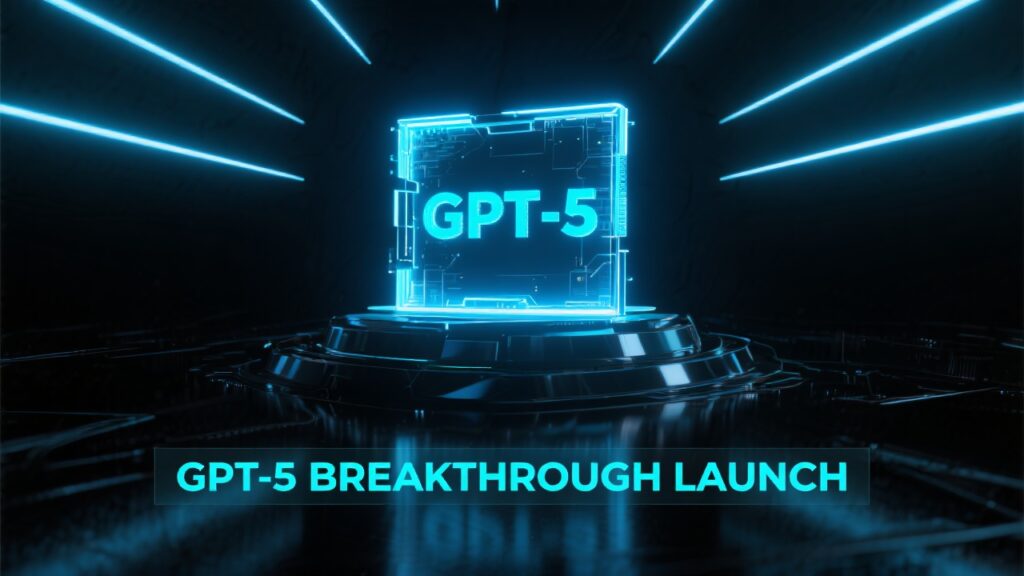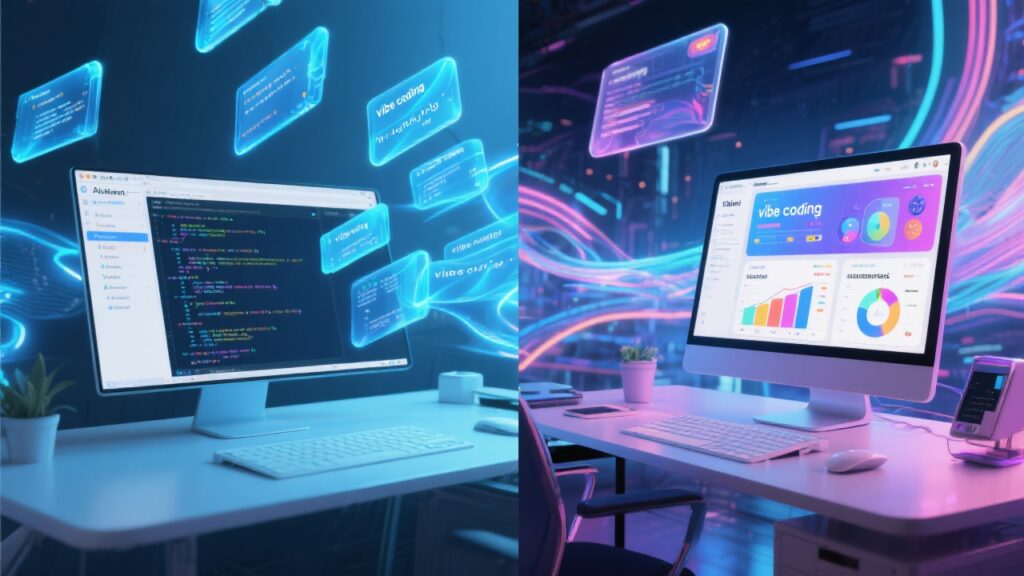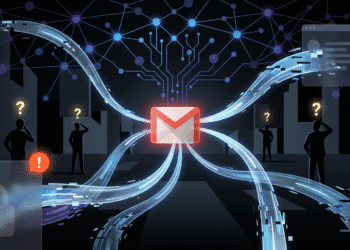OpenAI has officially launched GPT-5, marking a revolutionary leap forward in artificial intelligence technology. Released on August 7, 2025, this groundbreaking model represents the company’s most sophisticated AI system to date, unifying advanced reasoning capabilities with multimodal processing in a single, powerful platform.

The Dawn of a New AI Era
The release of GPT-5 signals a transformative moment in AI development. Unlike its predecessors, this model doesn’t just offer incremental improvements it represents a fundamental shift in how AI systems think, reason, and interact with users.
OpenAI CEO Sam Altman describes the experience as “something that I just don’t wanna ever have to go back from,” comparing it to the first iPhone with a Retina display. This analogy captures the magnitude of the advancement GPT-5 brings to the AI landscape.
The model is now available to all ChatGPT users, from free tier subscribers to enterprise customers. This democratization of advanced AI technology marks a significant milestone in making cutting-edge artificial intelligence accessible to everyone.
Revolutionary Performance Capabilities
GPT-5 delivers unprecedented performance across multiple domains. According to CNBC’s coverage, the model demonstrates superior capabilities in writing, coding, and healthcare applications. Altman confidently states, “This is the best model in the world at coding, the best model in the world at writing, the best model in the world at health care, and a long list of things beyond that.”
The performance improvements are quantifiable and impressive. OpenAI’s official documentation reveals that GPT-5 with thinking capabilities performs 50-80% better than the previous o3 model while using fewer output tokens. This efficiency gain translates to faster responses and more accurate results across various applications.
Testing has shown remarkable improvements in hallucination reduction. GPT-5’s responses are 45% less likely to contain factual errors compared to GPT-4o, and when using its reasoning mode, the error rate drops by an astounding 80% compared to the o3 model.
Unified Intelligence Architecture
One of GPT-5’s most significant innovations is its unified architecture. Previous OpenAI models required users to switch between different specialized versions depending on their needs. GPT-5 eliminates this complexity through an intelligent routing system.
The model automatically determines whether to use its standard processing or engage deeper reasoning capabilities based on query complexity. Users can also explicitly trigger enhanced reasoning by including phrases like “think hard” in their prompts. This seamless integration makes advanced AI capabilities more intuitive and accessible.
Nick Turley, head of ChatGPT, emphasizes the user experience improvement: “The vibes of this model are really good. I think that people are really going to feel that, especially average people who haven’t been spending their time thinking about models.”
Advanced Coding and Development Features

GPT-5 introduces what Altman calls “software on demand” capabilities. The model excels at generating functional applications from simple text prompts, a process dubbed “vibe coding.” During demonstrations, GPT-5 successfully created interactive web applications within seconds, complete with working frontends and engaging user interfaces.
The model’s coding prowess extends beyond simple script generation. It can handle complex, multi-step development tasks and create sophisticated applications with minimal input. This capability positions GPT-5 as a powerful tool for both professional developers and non-technical users looking to create digital solutions.
Performance benchmarks confirm GPT-5’s coding superiority. The model outperforms competitors on industry-standard tests including SWE-Bench, SWE-Lancer, and Aider Polyglot, establishing it as the leading AI system for software development tasks.
Enhanced Safety and Reliability
OpenAI invested over 5,000 hours in safety testing for GPT-5. The company focused heavily on reducing the model’s tendency to provide inaccurate information while maintaining helpfulness across diverse use cases.
A key innovation is GPT-5’s “safe completions” feature. Instead of refusing to answer potentially sensitive questions outright, the model provides helpful information within appropriate safety constraints. Alex Beutel, OpenAI’s safety research lead, explains: “The model will only partially comply, often sticking to higher-level information that can’t actually be used to cause harm.”
The model also demonstrates improved self-awareness regarding its limitations. GPT-5 is better at recognizing when it cannot complete a task or lacks sufficient information to provide an accurate answer, helping build user trust through honest communication.
Multimodal Integration and Future Capabilities
GPT-5 represents a significant advancement in multimodal AI processing. The model seamlessly handles text, images, and voice inputs, providing more natural and intuitive interactions. While video processing capabilities are not yet fully integrated, the architecture supports future expansion to include comprehensive video analysis and generation.
The model’s multimodal capabilities extend beyond simple input processing. GPT-5 can reason across different types of media, making connections between visual, textual, and auditory information in ways that previous models couldn’t achieve.
Accessibility and Pricing Structure
OpenAI has made GPT-5 available across all user tiers, though with different usage limits. Free users can access the full model until reaching their usage cap, after which they’re switched to GPT-5 mini. This approach ensures that advanced AI capabilities remain accessible while encouraging upgrades for heavy users.
For developers, OpenAI offers three API variants: GPT-5, GPT-5 mini, and GPT-5 nano. Each version is optimized for different use cases, balancing performance, cost, and latency requirements. This tiered approach allows developers to choose the most appropriate model for their specific applications.
Industry Impact and Competitive Positioning
The release of GPT-5 repositions OpenAI at the forefront of AI development. With ChatGPT approaching 700 million weekly users, the company needed a breakthrough model to maintain its competitive edge. GPT-5 delivers on this requirement, offering capabilities that significantly surpass current alternatives.
Box CEO Aaron Levie, whose company has been testing GPT-5, describes it as a “complete breakthrough.” He notes that previous AI models failed many advanced tests due to limitations in processing complex mathematical or logical content within long documents, but GPT-5 successfully handles these challenges.
The model’s ability to retain more information and apply higher-level reasoning makes it particularly valuable for enterprise applications. This capability opens new possibilities for business automation, document analysis, and complex decision-making processes.
The Path Toward Artificial General Intelligence
While OpenAI’s stated mission involves developing Artificial General Intelligence (AGI), Altman acknowledges that GPT-5, despite its advances, still lacks certain crucial capabilities. The model doesn’t continuously learn from new information during deployment, which Altman considers an important component of true AGI.
However, GPT-5 represents significant progress toward generally intelligent systems. Altman describes it as “clearly a model that is generally intelligent,” even while acknowledging areas for future development. The model’s ability to handle diverse tasks across multiple domains demonstrates the kind of versatility associated with general intelligence.
Looking Forward: The Future of AI Development
GPT-5’s release marks the beginning of a new chapter in AI development rather than an endpoint. The model’s unified architecture and advanced capabilities provide a foundation for future innovations. OpenAI continues working on additional features, including enhanced video processing and more sophisticated reasoning capabilities.
The company’s approach to model development has evolved from creating specialized systems to building unified platforms capable of handling diverse tasks. This shift reflects a broader industry trend toward more versatile and capable AI systems.
The success of GPT-5 also highlights the importance of safety research and responsible AI development. OpenAI’s extensive testing and safety measures demonstrate how advanced AI systems can be developed and deployed responsibly.
Conclusion: A New Standard for AI Excellence

GPT-5 establishes a new benchmark for AI capability and accessibility. By combining advanced reasoning, multimodal processing, and improved safety measures in a single, user-friendly system, OpenAI has created a model that truly democratizes access to cutting-edge artificial intelligence.
The model’s immediate availability to all users, from free tier subscribers to enterprise customers, ensures that these advanced capabilities can benefit individuals, businesses, and organizations worldwide. As users begin exploring GPT-5’s capabilities, we can expect to see innovative applications and use cases that were previously impossible.
The release of GPT-5 represents more than just a technological advancement it’s a glimpse into the future of human-AI collaboration. With its enhanced reasoning capabilities, improved accuracy, and intuitive interface, GPT-5 brings us closer to a world where artificial intelligence serves as a truly intelligent partner in solving complex problems and creating innovative solutions.










Comments 5